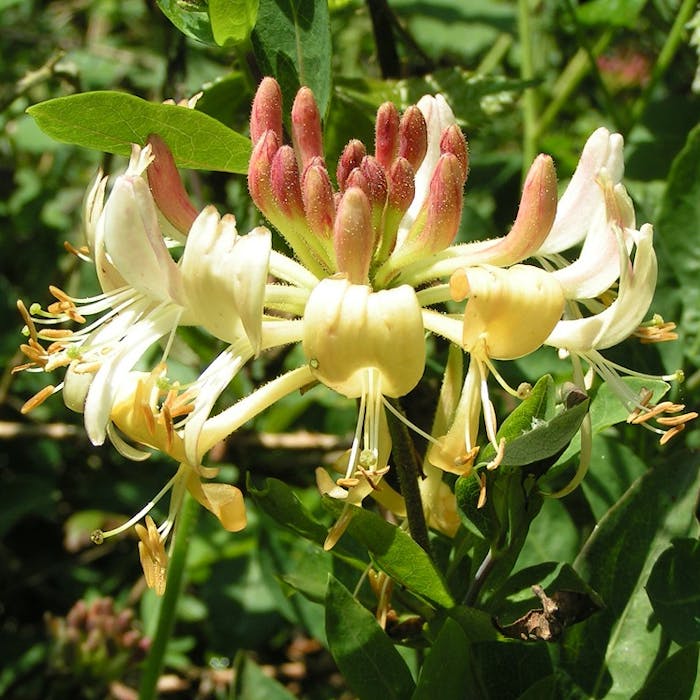
The night-scented native honeysuckle
The common honeysuckle, or as Shakespeare describes it in A Midsummer Night's Dream "luscious woodbine", is a deciduous climbing plant famed for its heady scent on summer evenings.
It has long been a popular in English art and design, for example as the basis of a famous 1876 textile design by William Morris.
It is common in woods and hedgerows, and a popular choice for gardens.
This flowering plant is native to much of Europe, North Africa, Turkey and the Caucasus.
Its flowers are a creamy-white becoming yellow once pollinated, and produced from June through to September. They are pollinated by long tongued bumblebees, and moths. It is to attract the moths that honeysuckles are most heavily scented in the evenings. Some moths are said to be able to pick up the scent of a honeysuckle from up to 1/4 of a mile away. Unsurprisingly perhaps, it's also a food plant for a range of moth larvae. More oddly, dormice eat its flowers. Once pollinated, honeysuckle produces bright red berries, which are eaten by songbirds but poisonous to man. The flowers, however, are edible.
The honeysuckle climbs by spiralling around trees and shrubs clockwise, and can grow to around 20 feet.
It is a valuable plant for wildlife, offering food sources and shelter to a wide variety of animals.
Common honeysuckle is the County Flower of Warwickshire.
Further reading
Links to external websites are not maintained by Bite Sized Britain. They are provided to give users access to additional information. Bite Sized Britain is not responsible for the content of these external websites.
